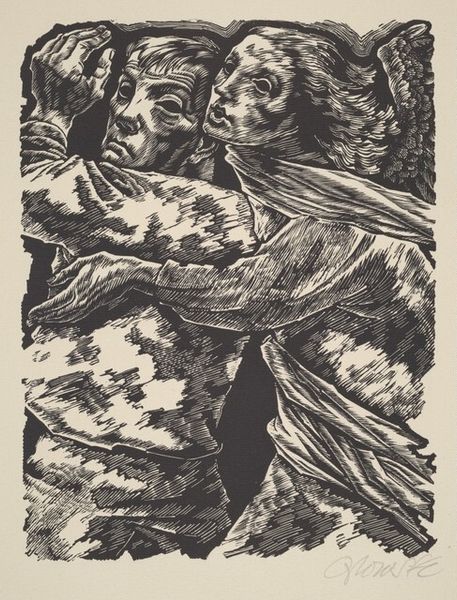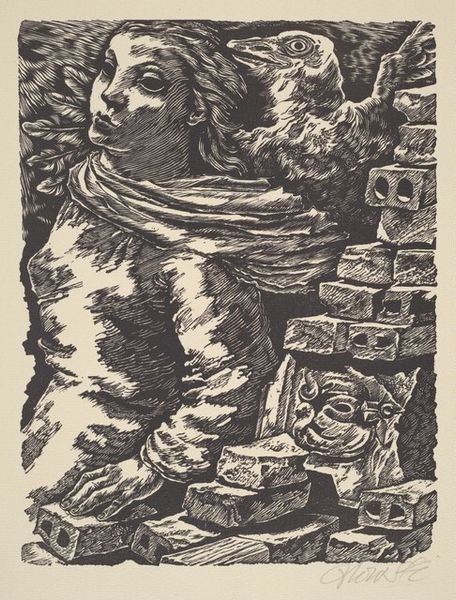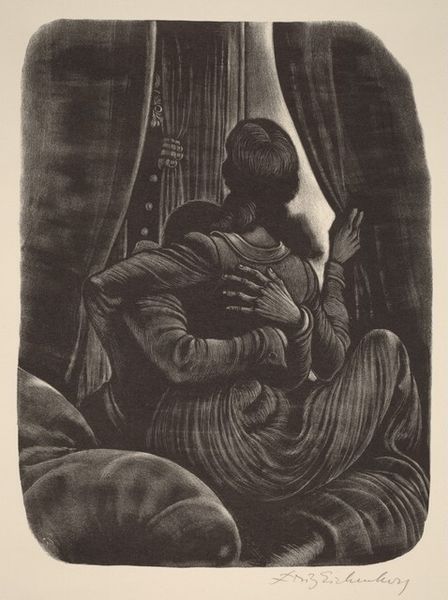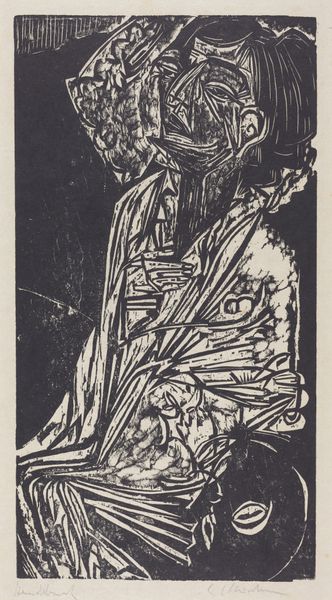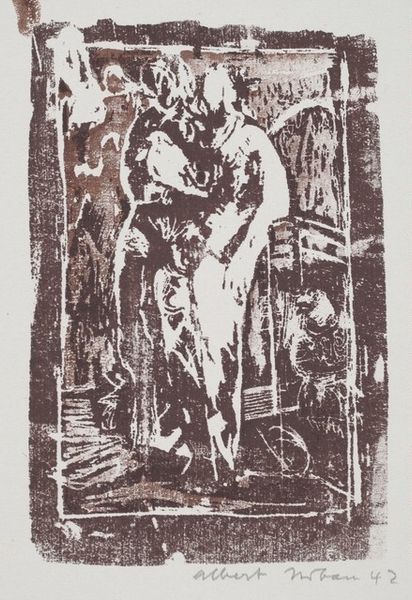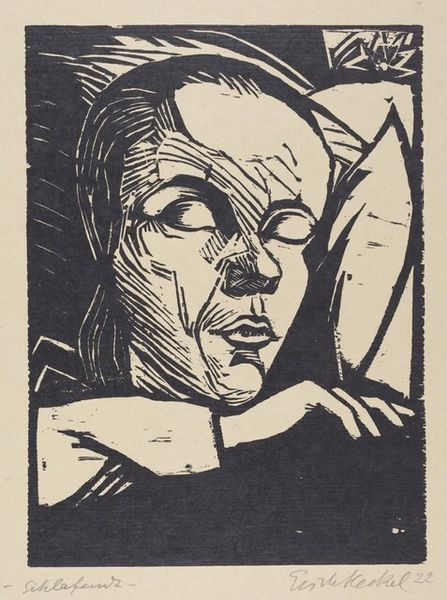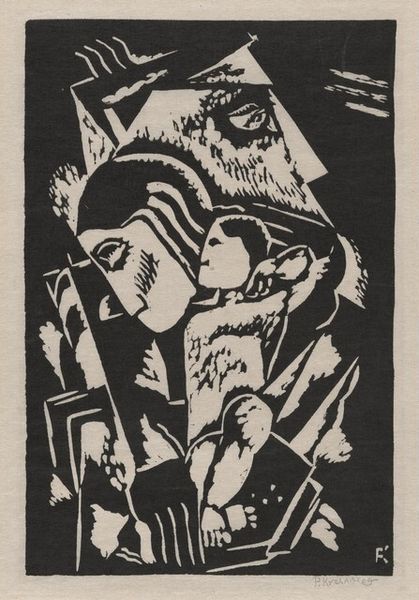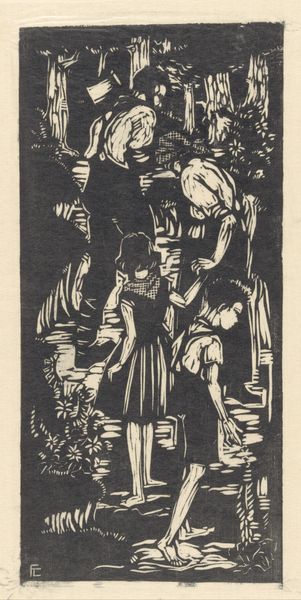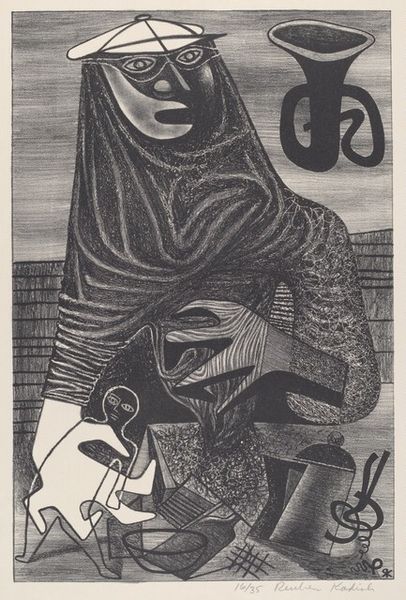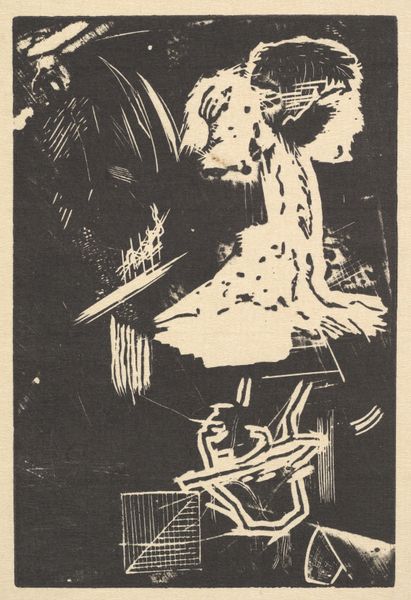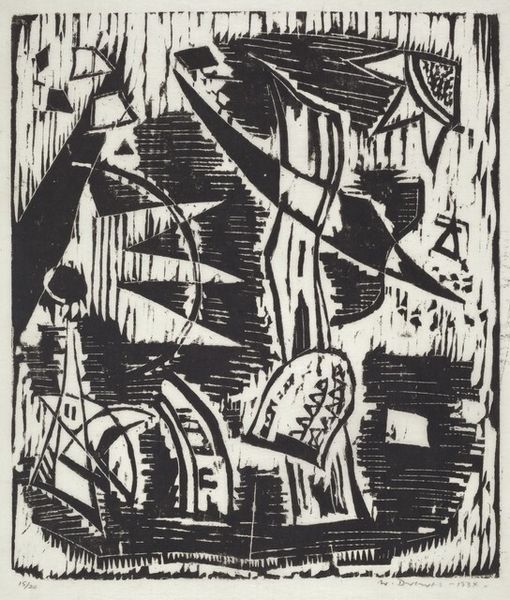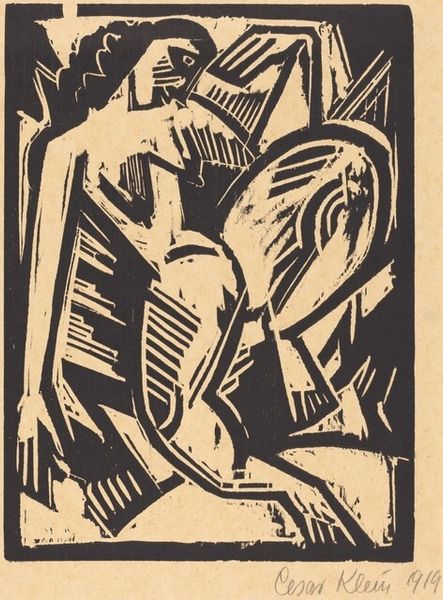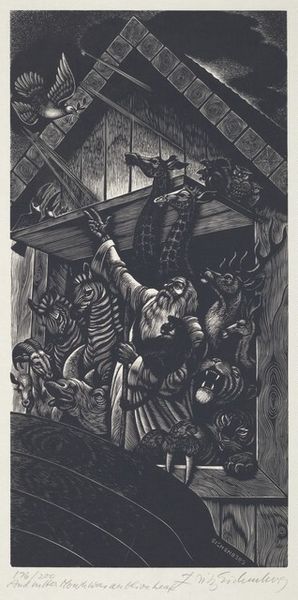
Dimensions: overall: 35.2 × 25.4 cm (13 7/8 × 10 in.)
Copyright: National Gallery of Art: CC0 1.0
Curator: Hans Orlowski's "Weighing Angel," a woodcut print from 1946. What are your initial impressions? Editor: Stark. The black and white creates an immediate sense of gravity, amplified by the angel's somewhat mournful expression and the crumbling pillars behind her. Curator: It’s certainly a reflection of the time. Orlowski made this shortly after World War II. Considering the immense human cost, how does the figure of an angel weighing souls or deeds resonate? Editor: The scales are fascinating, aren't they? Almost archaic. It begs the question, what justice are we really seeking, and who gets to determine its measure, especially after such a cataclysm? And the way the angel averts her eyes… it speaks volumes about the complexities, the immeasurable weight. Curator: The work exemplifies German Expressionism, in its style—the stark lines, the high contrast, even the exaggerated form of the angel contribute to its emotional intensity. I would also highlight the historical context as we talk about power. Remember the roles imagery plays to shape societies, their rules, and their sense of justice. Editor: Exactly. I see this angel not just as a symbol of divine judgment but also a figure grappling with the messiness of human history, of being burdened with impossible expectations, or forced compromise. After all, it may well be understood in relation to institutions whose judgements impact ordinary lives. Curator: The woodcut medium itself, with its inherent limitations and bold strokes, underscores this rawness. There is a brutality. It leaves very little space for delicacy. Editor: And that’s perhaps the point. Post-war, delicacy seems a luxury no one could afford. It forces us to confront uncomfortable truths head-on. Curator: Looking closer, the way the angel's wing intersects with what I can only describe as broken pillars suggests collapse. The pillars of society, maybe? Editor: Possibly! Ultimately, the artwork offers space to understand it across a wide historical spectrum. From a theological perspective, we could see justice; however, if we approach the print from an intersectional perspective, the print embodies critical reflection of structural institutions. Curator: Food for thought. Orlowski definitely left us much to consider through her careful crafting.
Comments
No comments
Be the first to comment and join the conversation on the ultimate creative platform.
